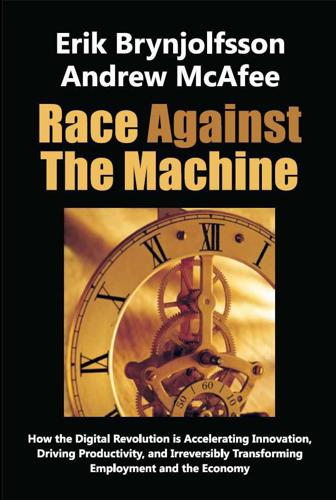
Race Against the Machine: How the Digital Revolution Is Accelerating Innovation, Driving Productivity, and Irreversibly Transforming Employment and the Economy
by
Erik Brynjolfsson
Published 23 Jan 2012
This fact helps us to better understand the past few turbulent years and the true impact of digital technologies on jobs. A good illustration of how much recent technology advances have taken us by surprise comes from comparing a carefully researched book published in 2004 with an announcement made in 2010. The book is The New Division of Labor by economists Frank Levy and Richard Murnane. As its title implies, it’s a description of the comparative capabilities of computers and human workers. In the book’s second chapter, “Why People Still Matter,” the authors present a spectrum of information-processing tasks. At one end are straightforward applications of existing rules.
…
Because those with the least education typically already had the lowest wages, this change has increased overall income inequality. It’s clear from the chart in Figure 3.5 that wage divergence accelerated in the digital era. As documented in careful studies by David Autor, Lawrence Katz, and Alan Krueger, as well as Frank Levy and Richard Murnane and many others, the increase in the relative demand for skilled labor is closely correlated with advances in technology, particularly digital technologies. Hence, the moniker “skill-biased technical change,” or SBTC. There are two distinct components to recent SBTC. Technologies like robotics, numerically controlled machines, computerized inventory control, and automatic transcription have been substituting for routine tasks, displacing those workers.
…
At one end are straightforward applications of existing rules. These tasks, such as performing arithmetic, can be easily automated. After all, computers are good at following rules. At the other end of the complexity spectrum are pattern-recognition tasks where the rules can’t be inferred. The New Division of Labor gives driving in traffic as an example of this type of task, and asserts that it is not automatable: The … truck driver is processing a constant stream of [visual, aural, and tactile] information from his environment. … To program this behavior we could begin with a video camera and other sensors to capture the sensory input.

The Second Machine Age: Work, Progress, and Prosperity in a Time of Brilliant Technologies
by
Erik Brynjolfsson
and
Andrew McAfee
Published 20 Jan 2014
Excellent research and analysis, conducted by colleagues who we respect a great deal, concluded that driving would remain a human task for the foreseeable future. How they reached this conclusion, and how technologies like Chauffeur started to overturn it in just a few years, offers important lessons about digital progress. In 2004 Frank Levy and Richard Murnane published their book The New Division of Labor.1 The division they focused on was between human and digital labor—in other words, between people and computers. In any sensible economic system, people should focus on the tasks and jobs where they have a comparative advantage over computers, leaving computers the work for which they are better suited.
…
Students themselves, leaders of the organizations that might hire them, educators, policy makers and elected officials, and many others also wonder which human skills and abilities, if any, will still be valued as technology continues to improve. Recent history shows that this is a difficult question to answer. Frank Levy and Richard Murnane’s excellent book The New Division of Labor was by far the best research and thinking on this topic when it came out in 2004, arguing that pattern recognition and complex communication were the two broad areas where humans would continue to hold the high ground over digital labor. As we’ve seen, however, this has not always proved to be the case.
…
Weitzman, “Recombinant Growth,” Quarterly Journal of Economics 113, no. 2 (1998): 331–60. 13. Bjørn Lomborg, The Skeptical Environmentalist: Measuring the Real State of the World (Cambridge, UK: Cambridge University Press, 2001), p. 165. Chapter 2 THE SKILLS OF THE NEW MACHINES 1. Frank Levy and Richard J. Murnane, The New Division of Labor: How Computers Are Creating the Next Job Market (Princeton, NJ: Princeton University Press, 2004). 2. Michael Polanyi, The Tacit Dimension (Chicago, IL: University of Chicago Press, 2009), p. 4. 3. Joseph Hooper, “DARPA’s Debacle in the Desert,” Popular Science, June 4, 2004, http://www.popsci.com/scitech/article/2004-06/darpa-grand-challenge-2004darpas-debacle-desert. 4.
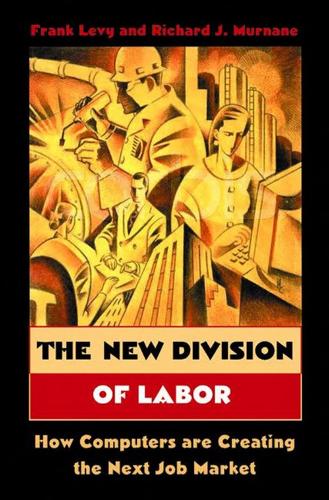
The New Division of Labor: How Computers Are Creating the Next Job Market
by
Frank Levy
and
Richard J. Murnane
Published 11 Apr 2004
Murnane RUSSELL SAGE FOUNDATION New York PRINCETON UNIVERSITY PRESS Princeton and Oxford Copyright © 2004 by Russell Sage Foundation Requests for permission to reproduce materials from this work should be sent to Permissions, Princeton University Press Published by Princeton University Press, 41 William Street, Princeton, New Jersey 08540 In the United Kingdom: Princeton University Press, 3 Market Place, Woodstock, Oxfordshire OX20 1SY and Russell Sage Foundation, 112 East 64th Street, New York, New York 10021 All Rights Reserved Second printing, and first paperback printing, 2005 Paperback ISBN-13: 978-0-691-12402-5 Paperback ISBN-10: 0-691-12402-7 The Library of Congress has cataloged the cloth edition of this book as follows Levy, Frank, 1941– The new division of labor : how computers are creating the next job market / Frank Levy and Richard J. Murnane. p. cm. ISBN 0-691-11972-4 (cl. : alk. paper) 1. Labor supply—Effect of technological innovations on. 2. Labor supply—Effect of automation on. 3. Computers—Social aspects. 4. Employees—Effect of automation on. 5. Automation—Economic aspects.
…
A manager might never have a direct report exactly like Ned, but the ideas she would learn from discussing with others Alonzo’s problem with Ned would help build patterns of knowledge—schemas—that she could adapt to similar problems. 2. Todd Willis is a pseudonym for one of the participants in Basic Blue. 3. See Mary Ann Zehr, “Computer Giants Look to Students,” Education Week 17, no. 31 (April 15, 1998). 4. For the details of this story, see Richard Murnane, Nancy Sharkey, and Frank Levy, “A Role for the Internet in American Education? Lessons from Cisco Networking Academies,” in The Knowledge Economy and Postsecondary Education, ed. Patricia Albjerg Graham and Nevzer G. Stacey (Washington, D.C.: National Academy Press, 2002), 127–57. 5. As discussed later, the community server also keeps track of students’ grades on chapter tests and the semester examination, eliminating the bookkeeping activities that consume a great deal of time for most teachers. 6.
…
Kathleen Donovan, a reference librarian at Harvard’s Gutman Library, tracked down numerous references for us, in some cases anticipating what we really wanted to know before we understood it. We thank Peter Dougherty, the social science editor at Princeton University Press, his colleague Tim Sullivan, and Suzanne Nichols of the Russell Sage Foundation for pushing us to clarify the book’s message and shepherding the manuscript to publication. Richard Murnane’s secretary, Wendy Angus, patiently kept track of the multiple versions of chapters and made sure that the right versions were sent to readers and to Peter. We dedicate this book to our families. Our children, David, Marin, John, and Daniel, would tease us about this book’s movie rights, but their good humor (most of the time) kept us going.

Ghost Work: How to Stop Silicon Valley From Building a New Global Underclass
by
Mary L. Gray
and
Siddharth Suri
Published 6 May 2019
The other tasks carried out by U.S. labor forces are “routine cognitive tasks,” like maintaining expense reports and other services that are “well described by logical rules”; “routine manual tasks,” like “physical tasks that can be well described by using rules,” such as “installing windshields”; and “non-routine manual tasks that cannot be well described as following a set of If-Then-Do rules because they require optical recognition and fine motor control”—“like driving a truck.” “This drive to develop, produce, and market new products relies on the human ability to manage and solve analytical problems and communicate new information, so it keeps expert thinking and complex communication in strong demand.” See Frank Levy and Richard Murnane, The New Division of Labor: How Computers Are Creating the Next Job Market (Princeton, NJ: Princeton University Press, 2004). [back] 42. Shoshana Zuboff, In the Age of the Smart Machine: The Future of Work and Power (New York: Basic Books, 1988). [back] 43. Also called “piece-rate,” “putting-out,” British “cottage industries,” “industrial home work,” and the American “commission system.”
…
New York: ACM, 2015. https://doi.org/10.1145/2685553.2699339. Leopold, Till Alexander, Saadia Zahidi, and Vesselina Ratcheva. The Future of Jobs: Employment, Skills and Workforce Strategy for the Fourth Industrial Revolution. Geneva, Switzerland: World Economic Forum, 2016. Levy, Frank, and Richard Murnane. The New Division of Labor: How Computers Are Creating the Next Job Market. Princeton, NJ: Princeton University Press, 2004. Li, Fei-Fei. “ImageNet: Where Have We Been? Where Are We Going?” ACM Learning Webinar, 2017. https://learning.acm.org/. Lichtenstein, Nelson. The Most Dangerous Man in Detroit. New York: Basic Books, 1995.
…
Early industrialists sought to divide labor between machines and full-time employees, but that division couldn’t see, much less value, the workers who filled in the gap. Similarly, as tech engineers and businesses looked to automate productivity, they generated a demand for people to step in, for an indeterminate stretch, to do what economist Frank Levy and computer scientist Richard Murnane refer to as the “expert thinking” and “complex communication” required to make services work, as promised.41 Caught in the paradox of automation’s last mile, these workers are pointed toward some vague exit, attached to an imagined automated future floating on the horizon. A century later, contingent labor remains tucked in the folds of a busy production loop hidden from sight and impossible to fully credit or value.
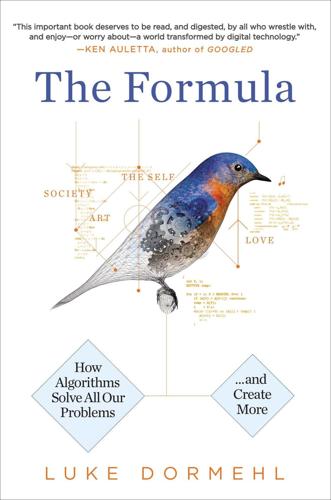
The Formula: How Algorithms Solve All Our Problems-And Create More
by
Luke Dormehl
Published 4 Nov 2014
Computer scientist and teacher John MacCormick similarly gives the example of an algorithm’s unsuitability for being used as a teaching aid for grading students’ work, since this is a task that is too complex (and, depending on the subject, too subjective) for a bot to carry out.5 Could both of these tasks be performed algorithmically in the future as computers continue to get more powerful? Absolutely. It is for this reason that it is dangerous to bet against a bot. A decade ago, respected MIT and Harvard economists Frank Levy and Richard Murnane published a well-researched book entitled The New Division of Labor, in which they compared the respective capabilities of human workers and computers. In an optimistic second chapter called “Why People Still Matter,” the authors described a spectrum of information-processing tasks ranging from those that could be handled by a computer (e.g., arithmetic), to those that only a human could do.
…
Colors, no. 85, December 3, 2012. colorsmagazine.com/stories/magazine/85/story/algorithms. 4 Gladwell, Malcolm. Blink: The Power of Thinking Without Thinking (New York: Little, Brown, 2005). 5 MacCormick, John. Nine Algorithms That Changed the Future: The Ingenious Ideas That Drive Today’s Computers (Princeton, N.J.: Princeton University Press, 2012). 6 Levy, Frank, and Richard Murnane. The New Division of Labor: How Computers Are Creating the Next Job Market (New York: Russell Sage Foundation; Princeton, N.J.: Princeton University Press, 2004). 7 Stone, Brad. The Everything Store: Jeff Bezos and the Age of Amazon (New York: Little, Brown, 2013). 8 Bellos, David. Is That a Fish in Your Ear?

Only Humans Need Apply: Winners and Losers in the Age of Smart Machines
by
Thomas H. Davenport
and
Julia Kirby
Published 23 May 2016
While his objective was mainly to show how advancing automation could and must enable humans to embrace their humanity more, and he wasn’t as concerned with defining those human attributes too tightly, he did point to creativity and spirituality as parts of the human condition that machines do not share. He also identified a human strength in the range and speed of our adaptability, in contrast to both other animals and machines. More recently, economists Frank Levy and Richard Murnane put a finer point on things, saying (in their persuasive book, The New Division of Labor: How Computers Are Creating the Next Job Market) that the great strengths of humans are expert thinking and complex communication. The brain’s gift for pattern recognition is the key to what they call “expert thinking,” which is what allows humans, but not computers, to imagine new ways of solving problems (ways, in other words, that have not already been discovered and spelled out step by step).
…
But, she says, that will give her people the opportunity to go deeper and offer clients “context, humanization and the ‘why’ behind big data.” Her shop will increasingly “go beyond analysis and translate that data in a way that informs business decisions through synthesis and the power of great narrative.” This sounds an awful lot like what economists Frank Levy and Richard Murnane refer to as the human strength of complex communication. It also sounds like an ideal partnership of human and machine, in which the value each brings to the arrangement is amplified by the other—in other words, it sounds like augmentation. The best investments in intelligent machines, Nicita thinks—and this is the core belief of an augmentation strategy—do not usher people out the door, much less relegate them to doing the bidding of robot overlords.
…
Christopher Niesche, “The New Flavours of Auditing,” IntheBlack.com, April 11, 2014, http://intheblack.com/articles/2014/04/11/the-new-flavours-of-auditing. 5. Catherine Rampell, “Want a Job? Go to College, and Don’t Major in Architecture,” New York Times Economix blog, January 5, 2012, http://economix.blogs.nytimes.com/2012/01/05/want-a-job-go-to-college-and-dont-major-in-architecture. 6. Frank Levy, “How College Changes Demands for Human Skills,” OECD Working Paper, March 2010, http://www.oecd.org/edu/skills-beyond-school/45052661.pdf. Chapter 2: Just How Smart Are Smart Machines? 1. Ray Kurzweil, The Singularity Is Near (New York: Viking, 2005), 206. 2. Thomas H. Davenport and Jeanne G.

The Technology Trap: Capital, Labor, and Power in the Age of Automation
by
Carl Benedikt Frey
Published 17 Jun 2019
As noted, the fact that the wages of men without college degrees have fallen over the course of three decades, in other words, suggest that they are faced with fewer alternative job options for which their skills are suitable. Together with Autor, in their pioneering 2004 book, The New Division of Labor, Frank Levy and Richard Murnane, two economists at the Massachusetts Institute of Technology, were among the first to note this pattern: As computers have helped channel economic growth, two quite different types of jobs have increased in number, jobs that pay very different wages. Jobs held by the working poor—janitors, cafeteria workers, security guards—have grown in relative importance.
…
The illimitable complexity of the game means that not even the best players are capable of breaking it down into meaningful rules. Instead professionals play by recognizing patterns that emerge “when clutches of stones surround empty spaces.”3 As discussed above, humans still held the comparative advantage in pattern recognition when Frank Levy and Richard Murnane published their brilliant book The New Division of Labor in 2004.4 At the time, computers were nowhere near capable of challenging the human brain in identifying patterns. But now they are. Much more important than the fact that AlphaGo won is how it did so. While Deep Blue was a product of the rule-based age of computing, whose success rested upon the ability of a programmer to write explicit if-then-do rules for various board positions, AlphaGo’s evaluation engine was not explicitly programmed.
…
David Card and Orley Ashenfelter (Amsterdam: Elsevier), 4:1043–171. Chapter 9 1. P. F. Drucker, 1965, “Automation Is Not the Villain,” New York Times, January 10. 2. D. A. Grier, 2005, When Humans Were Computers (Princeton, NJ: Princeton University Press). 3. On mortgage underwriters, see F. Levy and R. J. Murnane, 2004, The New Division of Labor: How Computers Are Creating the Next Job Market (Princeton, NJ: Princeton University Press), 17–19. 4. H. Braverman, 1998, Labor and Monopoly Capital: The Degradation of Work in the Twentieth Century, 25th anniversary ed. (New York: New York University Press), 49. 5. N. Wiener, 1988, The Human Use of Human Beings: Cybernetics and Society (New York: Perseus Books Group). 6.
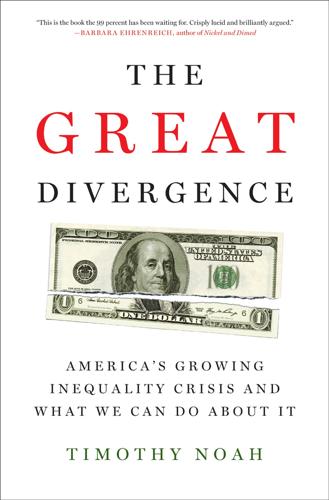
The Great Divergence: America's Growing Inequality Crisis and What We Can Do About It
by
Timothy Noah
Published 23 Apr 2012
Economic theory dating back to the nineteenth century said that technological advances wouldn’t reduce net employment because the number of jobs wasn’t fixed; a new machine might eliminate jobs in one part of the economy, but it would also create jobs in another part.6 For example, someone had to be employed to make these new machines. But as the economists Frank Levy of MIT and Richard J. Murnane of Harvard point out in their 2004 book The New Division of Labor, computers represented an entirely different sort of new machine. Previously, technology had performed physical tasks. (Think of John Henry‘s nemesis, the steam-powered hammer.) Computers were designed to perform cognitive tasks. (Think of Jeopardy champion Ken Jennings’s nemesis, IBM’s Watson.)
…
A decade after the Nobelists sent their letter, the Harvard sociologist (and onetime Fortune magazine journalist) Daniel Bell observed that it was “one more instance of the penchant for overdramatizing a momentary innovation and blowing it up far out of proportion to its actuality.” See Daniel Bell, The Coming of Post-Industrial Society: A Venture in Social Forecasting (New York: Basic Books, 1999; originally published in 1973), 463. 8. Frank Levy and Richard J. Murnane, The New Division of Labor: How Computers Are Creating the Next Job Market (Princeton, NJ.: Princeton University Press, 2004), 13–25; and Farhad Manjoo, “Will Robots Steal Your Job?,” Slate, Sept. 26–30, 2011, at http://www.slate.com/articles/technology/robot_invasion/2011/09/will_robots_steal_your_job.html.
…
But as service jobs migrate offshore, the more relevant distinction is between what Blinder calls “personally-delivered services” and “impersonally-delivered services.” Only impersonally delivered services can be moved offshore.21 Impersonally delivered services bear some similarity to, but are not exactly the same as, jobs requiring “rule-based logic,” which, as noted in the previous chapter, are the jobs that the MIT economist Frank Levy and the Harvard economist Richard Murnane deem most vulnerable to automation. But impersonally delivered services include a lot more high-skill jobs (though they include lots of low-skill jobs, too). Securities analysis (high-skill) can be delivered remotely; so can keyboard entry (low-skill), radiology (high-skill), and customer complaint centers.
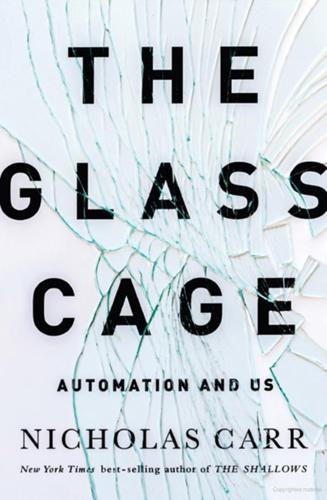
The Glass Cage: Automation and Us
by
Nicholas Carr
Published 28 Sep 2014
It forces us to change our thinking about what computers and robots can and can’t do. Up until that fateful October day, it was taken for granted that many important skills lay beyond the reach of automation. Computers could do a lot of things, but they couldn’t do everything. In an influential 2004 book, The New Division of Labor: How Computers Are Creating the Next Job Market, economists Frank Levy and Richard Murnane argued, convincingly, that there were practical limits to the ability of software programmers to replicate human talents, particularly those involving sensory perception, pattern recognition, and conceptual knowledge. They pointed specifically to the example of driving a car on the open road, a talent that requires the instantaneous interpretation of a welter of visual signals and an ability to adapt seamlessly to shifting and often unanticipated situations.
…
See also Tom Vanderbilt, “Let the Robot Drive: The Autonomous Car of the Future Is Here,” Wired, February 2012. 2.Daniel DeBolt, “Google’s Self-Driving Car in Five-Car Crash,” Mountain View Voice, August 8, 2011. 3.Richard Waters and Henry Foy, “Tesla Moves Ahead of Google in Race to Build Self-Driving Cars,” Financial Times, September 17, 2013, ft.com/intl/cms/s/0/70d26288-1faf-11e3-8861-00144feab7de.html. 4.Frank Levy and Richard J. Murnane, The New Division of Labor: How Computers Are Creating the Next Job Market (Princeton: Princeton University Press, 2004), 20. 5.Tom A. Schweizer et al., “Brain Activity during Driving with Distraction: An Immersive fMRI Study,” Frontiers in Human Neuroscience, February 28, 2013, frontiersin.org/Human_Neuroscience/10.3389/fnhum.2013.00053/full. 6.N.
…
Roberts, “ ‘The Case against Automation in Manned Fighter Aircraft,” SETP Quarterly Review 2, no. 3 (Fall 1957): 18–23. 42.Quoted in Mindell, Between Human and Machine, 77. 43.Harris, Human Performance on the Flight Deck, 221. Chapter Four: THE DEGENERATION EFFECT 1.Alfred North Whitehead, An Introduction to Mathematics (New York: Henry Holt, 1911), 61. 2.Quoted in Frank Levy and Richard J. Murnane, The New Division of Labor: How Computers Are Creating the Next Job Market (Princeton: Princeton University Press, 2004), 4. 3.Raja Parasuraman et al., “Model for Types and Levels of Human Interaction with Automation,” IEEE Transactions on Systems, Man, and Cybernetics—Part A: Systems and Humans 30, no. 3 (2000): 286–297.
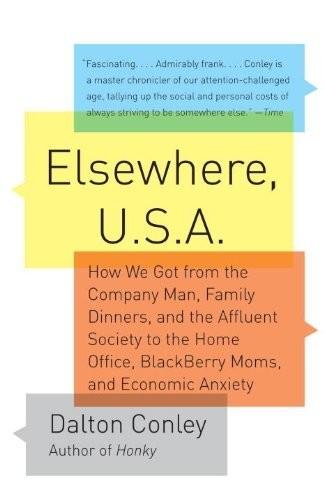
Elsewhere, U.S.A: How We Got From the Company Man, Family Dinners, and the Affluent Society to the Home Office, BlackBerry Moms,and Economic Anxiety
by
Dalton Conley
Published 27 Dec 2008
Ann Huff Stevens, “The More Things Change, the More They Stay the Same: Trends in Long-Term Employment in the United States,” NBER Working Paper no. 11878, 2005. 35. Arlie Russell Hochschild, The Time Bind: When Work Becomes Home and Home Becomes Work (New York: Metropolitan Books, 1997). 36. Markus Mobius and Raphael Schoenle, “The Evolution of Work,” NBER Working Paper no. 12694, 2006. 37. Frank Levy and Richard J. Murnane, The New Division of Labor: How Computers Are Creating the Next Job Market (Princeton, N.J.: Princeton University Press, 2004.). 38. Ibid., p. 38. 39. “Employment Status of Women and Men in 2006,” Women’s Bureau, U.S. Department of Labor, at http://www.dol.gov/wb/factsheets/Qf-ESWM06.htm. 40. Alison Owings, Hey, Waitress!
…
After all, it is for our band, which we hope will be discovered in the not-too-distant future. That’s an investment, isn’t it? For most of the industrial era, machines were used to augment or replace humans in performing some physical tasks. Now, with computerization, they were replacing some mental tasks as well. The economists Frank Levy and Richard Murnane put the emphasis on some since, they point out, a robot could not change a baby’s diaper. Similarly, computers (so far) are not very good at synthesizing data to see patterns on their own. They have no interpretive ability. Thus computers, according to Levy and Murnane, create as many jobs as they eliminate.
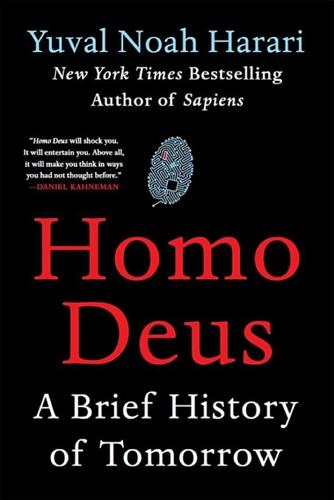
Homo Deus: A Brief History of Tomorrow
by
Yuval Noah Harari
Published 1 Mar 2015
., ‘Human-Level Control through Deep Reinforcement Learning’, Nature, 26 February 2015, accessed 12 August 2015, http://www.nature.com/nature/journal/v518/n7540/full/nature14236.html. 14. Michael Lewis, Moneyball: The Art of Winning an Unfair Game (New York: W. W. Norton, 2003). Also see the 2011 film Moneyball, directed by Bennett Miller and starring Brad Pitt as Billy Beane. 15. Frank Levy and Richard Murnane, The New Division of Labor: How Computers are Creating the Next Job Market (Princeton: Princeton University Press, 2004); Dormehl, The Formula, 225–6. 16. Tom Simonite, ‘When Your Boss is an Uber Algorithm’, MIT Technology Review, 1 December 2015, retrieved 4 February 2016, https://www.technologyreview.com/s/543946/when-your-boss-is-an-uber-algorithm/. 17.
…
Soon enough, many other baseball teams adopted the same algorithmic approach, and since the Yankees and Red Sox could pay far more for both baseball players and computer software, low-budget teams such as the Oakland Athletics now had an even smaller chance of beating the system than before.14 In 2004 Professor Frank Levy from MIT and Professor Richard Murnane from Harvard published a thorough research of the job market, listing those professions most likely to undergo automation. Truck drivers were given as an example of a job that could not possibly be automated in the foreseeable future. It is hard to imagine, they wrote, that algorithms could safely drive trucks on a busy road.
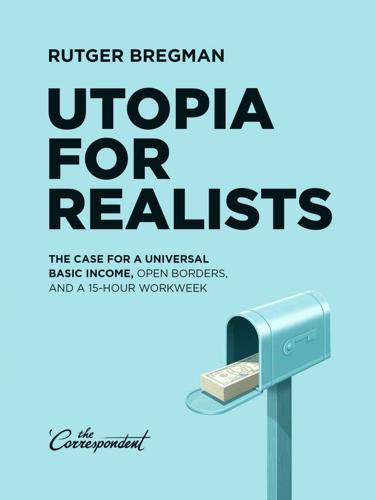
Utopia for Realists: The Case for a Universal Basic Income, Open Borders, and a 15-Hour Workweek
by
Rutger Bregman
Published 13 Sep 2014
David Rotman, “How Technology Is Destroying Jobs,” MIT Technology Review (June 12, 2013). http://www.technologyreview.com/featuredstory/515926/how-technology-is-destroying-jobs 22. Quoted in: Brynjolfsson and McAfee, The Second Machine Age, p. 27. 23. Ian Morris, Why The West Rules – For Now (2010), p. 495. 24. Morris, Why The West Rules, p. 497. 25. Diane Coyle, GDP. A Brief but Affectionate History (2014), p. 79. 26. Frank Levy and Richard Murnane, The New Division of Labor (2004). 27. There are indications that even jobs for the highly-skilled have come under pressure since 2000, leading them to snap up the less-skilled jobs. Increasingly, employees are overqualified for their jobs. See: Paul Beaudry, David A. Green and Ben Sand, “The Great Reversal in the Demand for Skill and Cognitive Tasks,” National Bureau of Economic Research (January 2013). http://www.economics.ubc.ca/files/2013/05/pdf_paper_paul-beaudry-great-reversal.pdf 28.
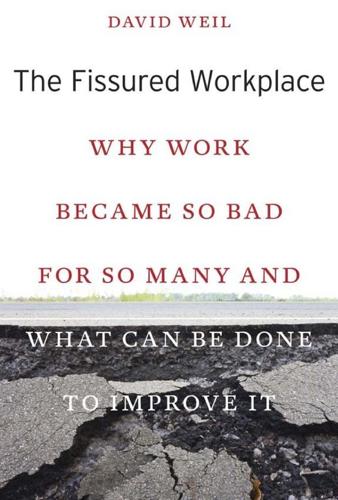
The Fissured Workplace
by
David Weil
Published 17 Feb 2014
Champaign, IL: Labor and Employment Relations Association, 243–267. Levinson, Marc. 2011. The Great A&P and the Struggle for Small Business in America. New York: Hill and Wang. Levitt, Peggy. 2001. The Transnational Villagers. Berkeley: University of California Press. Levy, Frank, and Richard J. Murnane. 2005. The New Division of Labor. Princeton, NJ: Princeton University Press. Lewis, Michael. 2009. Panic! The Story of Modern Financial Insanity. New York: W. W. Norton. ______. 2010. The Big Short: Inside the Doomsday Machine. New York: W. W. Norton. Liu, Peng. 2010. “Real Estate Investment Trusts: Performance, Recent Findings, and Future Directions.”
…
Alexander, Charlotte. 2012. “The Law and Economics of Peripheral Labor: A Poultry Industry Case Study.” Berkeley Journal of Employment and Labor Law (forthcoming). Appelbaum, Eileen, and Rose Batt. 2012. “A Primer on Private Equity at Work.” Challenge 55, no. 5: 5–38. Appelbaum, Eileen, Annette Bernhardt, and Richard Murnane, eds. 2003. Low Wage America: How Employers Are Reshaping Opportunity in the Workplace. New York: Russell Sage Foundation. Arlen, Jennifer, and W. Bentley MacLeod. 2005. “Beyond Master-Servant: A Critique of Vicarious Liability.” In Exploring Tort Law, edited by Stuart Madden. New York: Cambridge University Press, 111–142.
…
Erickcek, George, Susan Houseman, and Arne Kalleberg. 2003. “The Effects of Temporary Services and Contracting Out on Low-Skilled Workers: Evidence from Auto Suppliers, Hospitals, and Public Schools.” In Low Wage America: How Employers Are Reshaping Opportunity in the Workplace, edited by Eileen Appelbaum, Annette Bernhardt, and Richard Murnane. New York: Russell Sage Foundation, 368–406. Erickson, Chris, and Daniel Mitchell. 2007. “Monopsony as a Metaphor for the Emerging Post-union Labor Market.” International Labor Review 146, nos. 3–4: 163–187. Estlund, Cynthia. 1992. “What Do Workers Want? Employee Interests, Public Interests, and Freedom of Expression under the National Labor Relations Act.”

The Sharing Economy: The End of Employment and the Rise of Crowd-Based Capitalism
by
Arun Sundararajan
Published 12 May 2016
Krueger, Alternative Measures of Offshorability: A Survey Approach, National Bureau of Economic Research Working Paper No. w15287, 2006, http://www.nber.org/papers/w15287. 13. Blinder, How Many U.S. Jobs, 35. 14. The McKinsey study is at http://www.mckinsey.com/insights/business_technology/four_fundamentals_of_workplace_automation. 15. Frank Levy and Richard J. Murnane, The New Division of Labor: How Computers Are Creating the Next Job Market (Princeton, NJ: Princeton University Press, 2004). 16. Erik Brynjolfsson and Andrew McAfee, The Second Machine Age: Work, Progress, and Prosperity in a Time of Brilliant Technologies (New York: W.W. Norton, 2014), 9. 17.
…
A November 2015 McKinsey and Company study indicates that “as many as 45 percent of the activities individuals are paid to perform can be automated by adapting currently demonstrated technologies.”14 Looking deeper into the future of work, Erik Brynjolfsson and Andrew McAfee in The Second Machine Age argue that although computers have been transforming work, economics, and everyday life for several decades, we have finally reached a pivotal moment—a moment when we are grappling with the “full force” of digital technologies. The Second Machine Age builds on a book by the economists Frank Levy and Richard Murnane about the human–computer tradeoff in the labor market.15 Levy and Murnane examine, in detail, what tasks computers perform better than humans, and what tasks humans perform better than computers. They draw a broad conclusion—that computers have inherent advantages in tasks like rule-based decision making and simple pattern recognition, but digitization makes two kinds of tasks (complex communication and expert thinking) more valuable—and prescribe that humans acquire the skills that enable them to take on jobs involving such tasks.
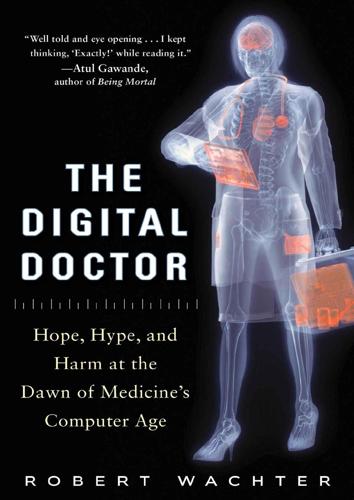
The Digital Doctor: Hope, Hype, and Harm at the Dawn of Medicine’s Computer Age
by
Robert Wachter
Published 7 Apr 2015
More important, as recently as a decade ago, some very smart and savvy computer engineers and economists believed that another seemingly intractable problem, building a driverless car, was beyond the reach of modern technology. Just consider the challenges: a kid running into the street after a soccer ball; a texting teenager swerving in the middle lane; a traffic light on the fritz. And the left turn. “Executing a left turn across oncoming traffic,” two highly respected economists, MIT’s Frank Levy and Harvard’s Richard Murnane, wrote in 2004, “involves so many factors that it is hard to imagine the set of rules that can replicate a driver’s behavior.” Yet six years later, Google’s unveiling of its driverless car demonstrated that this “insoluble problem” had been solved. As of April 2014, the Google car had clocked nearly 700,000 miles and been involved in two accidents.
…
While the car is an astounding achievement, there still are a few things it cannot do, described in R. Sorokanich, “Six Simple Things Google’s Self-Driving Car Still Can’t Handle,” August 30, 2014, available at http://gizmodo.com/6-simplethings-googles-self-driving-car-still-cant-han-1628040470. 94 “Executing a left turn across oncoming traffic” F. Levy and R. J. Murnane, The New Division of Labor: How Computers Are Creating the Next Job Market (Princeton, NJ: Princeton University Press, 2004). 94 “Just as factory jobs were eliminated” The story of Watson’s defeat of the Jeopardy champions is described in S. Baker, Final Jeopardy: Man vs. Machine and the Quest to Know Everything (New York: Houghton Mifflin Harcourt, 2011). 94 Sean Hogan, vice president for IBM Healthcare Interview of Hogan by the author, July 16, 2014. 94 “I can’t see how that doesn’t happen” Interview of McAfee by the author, August 13, 2014. 95 Hemingway’s observation about how a person goes broke E.
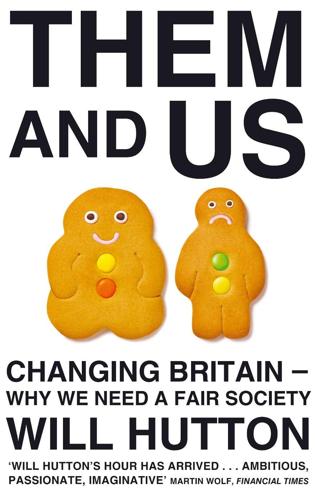
Them And Us: Politics, Greed And Inequality - Why We Need A Fair Society
by
Will Hutton
Published 30 Sep 2010
Porter and Claas van der Linde (1995) ‘Green and Competitive: Ending the Stalemate’, Harvard Business Review, September–October. 57 Joakim Nordqvist (2006) ‘Evaluation of Japan’s Top Runner Programme: Within the Framework of the AID-EE Project’, at http://www.aid-ee.org/index.htm. Chapter Ten: Dismantling the Have-What-I-Hold Society 1 Cabinet Office (2009) Unleashing Aspiration: The Final Report of the Panel on Fair Access to the Professions, HMSO. 2 Frank Levy and Richard Murnane (2004) The New Division of Labor: How Computers Are Creating the Next Job Market, Princeton University Press. See also Maarten Goos and Alan Manning (2007) ‘Lousy and Lovely Jobs: The Rising Polarization of Work in Britain’, Review of Economics and Statistics 89 (1): 118–33. 3 Howard Gardner (2009) Five Minds for the Future, Harvard Business School Press. 4 Arjun Appadurai, ‘The Capacity to Aspire: Culture and the Terms of Recognition’, in Vijayendra Rao and Michael Walton (eds) (2004) Culture and Public Action, Stanford University Press. 5 See his latest work: Amartya Sen (2009) The Idea of Justice, Harvard University Press; see also his (1992) Inequality Reexamined, Oxford University Press. 6 Edmund Phelps (2006) ‘Macroeconomics for a Modern Economy’, Nobel Prize lecture. 7 Tom Clark and Andrew Leicester (2004) ‘Inequality and Two Decades of British Tax and Benefit Reforms’, Fiscal Studies 25 (2): 129–58. 8 Alison Wolf, ‘Education’, in Varun Uberoi, Adam Coutts, Iain Mclean and David Halpern (eds) (2009) Options for a New Britain, Palgrave Macmillan. 9 Tim Horton and James Gregory (2009) The Solidarity Society: Why We Can Afford to End Poverty and How to Do It with Public Support, Fabian Society. 10 Tom MacInnes, Peter Kenway and Anushree Parekh, ‘Monitoring Poverty and Social Exclusion 2009’, report, Joseph Rowntree Foundation. 11 John Hills, Tom Sefton and Kitty Stewart (eds) (2009) Towards a More Equal Society?